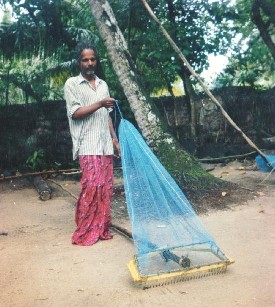|
Farming
Systems
Selection of Farm Site
Clams are bottom cultured and this method is substrate specific. The occurrence
of natural clam populations throws much light in selecting the site with particular
reference to tide level, substratum and water salinity. The clam farms are located
in estuaries, bays and other sheltered areas close to the shore. About 1-2 hours
exposure at each low tide is desirable as it is easy to remove the predators. Clams
are rarely grown in ponds.
The type of substratum preferred varies with the species. For example M. casta
thrives well on sandy bottom, while A. granosa prefers mud flats.
Also the salinity range tolerated differs between species. While V. cyprinoides
prefers low-saline waters, few species tolerate prolonged high saline conditions.
In areas subjected to heavy rains or freshwater drain from the land, clam farms
are located in areas where there is little wave action. Areas prone to frequent
changes of contour and vulnerable to pollution are avoided.
Bottom culture
The ground is leveled and cleared of predators such as boring gastropods, starfishes,
crabs and skates. Bamboo poles are planted on the boundary of the farm as markers.
The movements of the clams are limited and in many areas fencing is not necessary.
At high tide, seed measuring 10-25 mm in length are taken in a boat and planted
in the farm, taking care to get even disposal as far as possible. The stocking density
varies with the species cultured and the size of the seed. In the case of A. granosa
in 1000 to 2000/m2 are stocked and thinned more than once to achieve
a final density of 300 to 600/m2. A stocking density of 400/m2
is suggested for 10 mm seed and 300/m2 for 20 mm seed.
A recent development in clam culture is the use of 10 mm mesh synthetic netting
as a measure of protection for young clams. After seeding the farm, the netting
is laid and is held in stretched position by stakes driven into the substratum at
the periphery of the farm. Except for watch and ward work and eradication of predators
if they occur, no other maintenance job is necessary during the grow-out
phase. The clams are harvested after 5 or 6 months either by handpicking or by a
hand operated dredge.

Dredge used for clam harvesting
Top
|